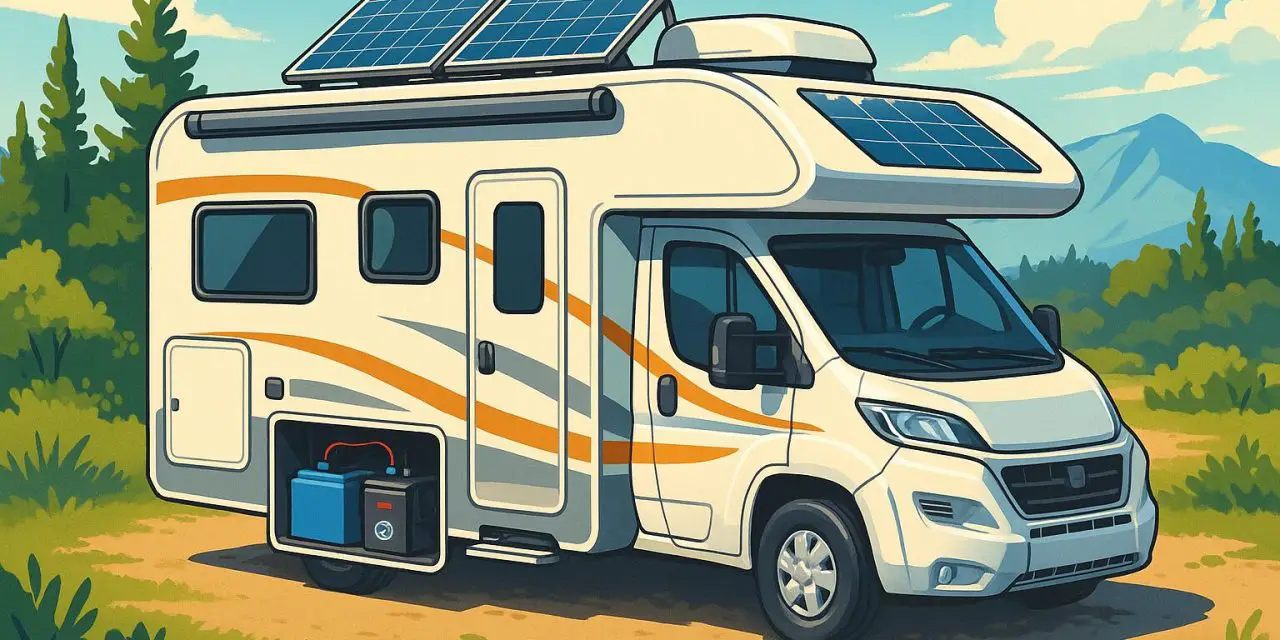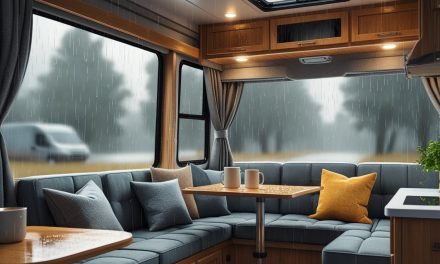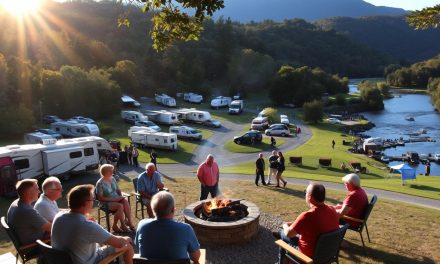Would you like to save this article?
You’ve probably been wondering if those fancy new 12-volt RV air conditioners can actually keep you cool when you’re boondocking in the middle of nowhere.
The truth is, these revolutionary cooling systems are completely changing how RVers think about staying comfortable off the grid. Traditional RV air conditioners guzzle power like a thirsty camel, but 12V units promise to run directly off your battery bank without needing shore power or a noisy generator.
Professional RV repair expert Emily from RV Repair Woman put the Country Mod Pro 12V air conditioner through rigorous real-world testing to see if it lives up to the hype. Her findings reveal some surprising truths that every RVer considering boondocking should know.
Whether you’re a weekend warrior or a full-time nomad, understanding these game-changing facts could revolutionize your off-grid adventures.
1. Installation Requires Some Serious MacGyvering Skills
You might think installing a 12V air conditioner is as simple as swapping out your old rooftop unit, but think again! The Country Mod Pro measures a hefty 31.5″ x 31.5″ compared to the typical Coleman Mach’s 24″ x 36″ footprint. This size difference means you’ll need to carefully measure your roof space, especially around solar panels and vents.
| Component | Traditional AC | Country Mod Pro 12V |
|---|---|---|
| Dimensions | 24″ x 36″ | 31.5″ x 31.5″ |
| Weight | 80 lbs | 50 lbs |
| Power Source | 120V AC | 12V DC |
| Cable Size | Standard ROMEX | 6 AWG |
Here’s where it gets tricky for your average RV setup. These units were originally designed for van builds and Class B RVs, not traditional travel trailers with ducted systems. You’ll need to figure out creative ways to route those thick 6 AWG power cables from your rooftop unit to your battery bank – and trust me, those cables are beefy.
Emily discovered that the supplied bolts were too short for traditional RV applications, requiring a hardware store run for couplers and longer bolts. The installation instructions also left out several crucial steps that could leave you scratching your head.
You’ll basically become an RV modification expert whether you want to or not! The process involves more problem-solving than a typical plug-and-play RV appliance, but don’t let that scare you away.
According to industry statistics, most RV air conditioners consume between 1,200-1,600 watts during operation Micro-Air, making power routing a critical consideration for any installation.
2. The Noise Factor Will Either Drive You Crazy or Lull You to Sleep
The Country Mod Pro runs 9 decibels quieter than traditional RV air conditioners, but here’s the catch – it runs constantly. Unlike your rooftop AC that cycles on and off throughout the day, this 12V unit keeps its fan running 24/7 when activated.
Think of it as choosing between a chatty roommate and a strong, silent type. Your traditional AC gives you blessed silence between cooling cycles, then jolts you awake when the compressor kicks in. The 12V system provides constant white noise that masks the compressor cycling, but never gives you complete quiet.
If you’re the type who needs dead silence to sleep, this constant fan hum might send you packing! However, many RVers actually prefer this consistent background noise over the jarring start-stop cycle of traditional units.
Emily tested multiple settings trying to find a “quiet mode” but discovered the fan runs continuously whenever the unit is powered on. This design choice eliminates the startling startup surge but means accepting perpetual ambient noise.
Research shows that 12V inverter air conditioners typically produce 40-50% less noise during operation compared to traditional units RV With Tito, making them popular for noise-sensitive campers.
3. Cooling Performance Has Some Serious Limitations (But Also Sweet Spots)
On a blazing 95°F day, the Country Mod Pro managed to drop the RV interior to a comfortable 80°F in just one hour – not exactly arctic conditions, but surprisingly livable thanks to excellent dehumidification.
Here’s the reality check: when outside temperatures stay above 90°F, this unit struggles to get your RV below 80°F. However, once ambient temperatures drop below 90°F, it can achieve a much more comfortable 75°F interior temperature.
| Outside Temperature | Achieved Interior Temp | Time to Cool |
|---|---|---|
| 95°F | 80°F | 1 hour |
| 90°F+ | 80°F (max) | 1-2 hours |
| Below 90°F | 75°F | 45 minutes |
The secret sauce is humidity control. That 80°F reading felt remarkably comfortable because the unit effectively removes moisture from the air. Dry heat at 80°F can feel cooler than humid air at 75°F, which explains why users report satisfaction even with higher temperature readings.
You’re not getting desert mirage-level cooling, but you’re definitely getting relief from sweltering conditions! The unit excels at “taking the edge off” rather than creating an ice box environment.
Emily lived in the RV for a full week during an Oregon heat wave and found the cooling adequate for comfortable sleeping and daytime activities. The key is managing expectations and understanding this technology’s sweet spot.
Industry data shows that most 12V air conditioners provide 7,000-12,000 BTU cooling capacity compared to 13,500-15,000 BTU for traditional RV units RIGID HVAC.
4. Power Consumption Will Blow Your Mind (In a Good Way)
Prepare to be amazed: the Country Mod Pro draws only 60 amps per hour (765 watts) compared to traditional RV air conditioners that consume 1,200-1,600 watts – that’s nearly 50% less power consumption!
Emily’s parents have a 400 amp-hour lithium battery bank and could previously run their traditional AC for only 45 minutes before worrying about overnight power. With the 12V system, they can theoretically run cooling for 4-5 hours while still maintaining power for other essentials.
| System Type | Power Draw | Runtime (400Ah Battery) | Cost Comparison |
|---|---|---|---|
| Traditional AC | 1,200-1,600W | 45 minutes | High inverter needed |
| Country Mod Pro | 765W | 4-5 hours | No inverter required |
| Savings | 47% less | 500% more runtime | Thousands in equipment |
The math is staggering. If you’re willing to drain batteries to zero (not recommended), you could run this unit for 6 straight hours. More realistically, with other RV systems running, you’re looking at 4-5 hours of cooling – a game-changer for boondocking.
You could literally cool your RV all afternoon and still have power for evening activities! This efficiency opens up camping possibilities that were previously impossible without generators or expensive inverter systems.
The elimination of inverter requirements saves thousands in equipment costs. Traditional AC systems need 2,000+ watt inverters that can cost $1,500-3,000, while 12V units plug directly into your DC system.
Studies indicate that battery-powered air conditioning typically provides 2-4 hours of runtime for traditional systems, but 12V units can extend this to 6-8 hours.
5. Airflow Performance Might Surprise You (Both Ways)
The Country Mod Pro moves air at 2.7 m/s compared to the Coleman Mach’s 4.5 m/s – significantly less volume, but potentially more effective for specific applications.
This reduced airflow actually makes sense when you understand the design philosophy. These units are engineered for non-ducted systems where air drops directly into the living space rather than being pushed through a network of vents throughout the RV.
You’re getting focused cooling rather than whole-RV air circulation! For smaller RVs or specific zone cooling, this concentrated approach can be more efficient than trying to cool every corner.
Emily found that strategic positioning of the directional vents could push adequate air to the bedroom for comfortable sleeping. The key is understanding that you’re working with targeted cooling rather than comprehensive climate control.
Airflow limitations become advantages in certain scenarios:
- Quieter operation due to slower fan speeds
- More precise temperature control in specific areas
- Reduced power consumption from smaller fan motors
- Better humidity removal with longer air contact time
If you’re expecting hurricane-force air movement, you’ll be disappointed, but the gentle, consistent airflow suits many RVing styles perfectly!
The reduced airflow also means less stress on your RV’s ceiling and ducting systems, potentially extending the lifespan of your interior components.
SOURCES
- RV Repair Woman – Country Mod Pro AC Review
- Micro-Air – RV AC Power Consumption
- EcoFlow – RV Air Conditioner Watts Usage
- RV With Tito – 12V Inverter Air Conditioners
- RIGID HVAC – 12 Volt RV AC Solutions
- The Fit RV – Battery AC Runtime Testing
- Jackery – RV AC Power Requirements
- Growatt – RV AC Power Consumption





